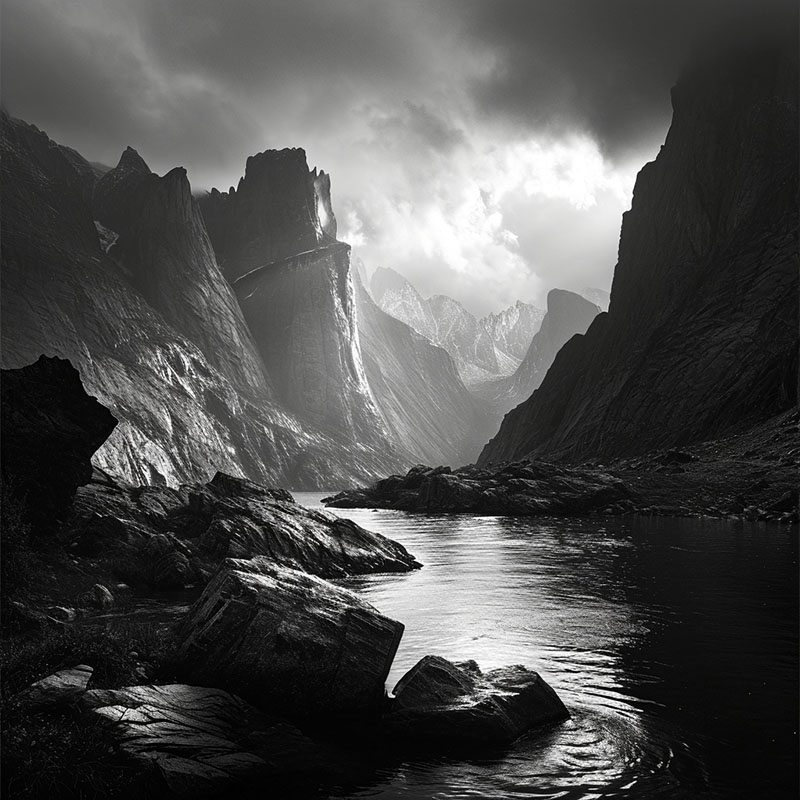
How Ansel Adams has inspired landscape photographers
Ansel Adams, a name synonymous with landscape photography, has left an indelible mark on the art form, inspiring generations of photographers. Adams' work, primarily focused on the American West and especially Yosemite National Park, set a new standard for capturing the beauty and grandeur of natural landscapes. His images are profound expressions of his deep connection with nature.
One of Adams' most significant contributions to landscape photography is his development of the Zone System, a technique for determining optimal film exposure and development. This system, which he developed with Fred Archer, revolutionized the control photographers have over the image-making process. It allowed for precise adjustments to exposure and contrast, enabling photographers to achieve a level of detail and tonal range previously thought impossible. This technical mastery is evident in the clarity and depth of Adams' landscapes, which continue to be a benchmark for photographic excellence.
Adams was also a master of composition. His ability to capture the grandeur of landscapes in a balanced and visually compelling manner is unrivaled. He had a unique eye for the interplay of light, shadow, and form, which brought a dynamic and dramatic quality to his photographs. His iconic images, such as "Moonrise, Hernandez, New Mexico" and "Clearing Winter Storm," showcase his skill in using natural light to sculpt the landscape, creating works that are both majestic and intimate.
Beyond his technical prowess, Adams' photography is celebrated for its environmental ethos. He was an ardent environmentalist, and his images reflect a deep respect and reverence for nature. Through his art, he advocated for the conservation of America's wilderness areas, influencing both public opinion and policy. His work was instrumental in promoting the idea of national parks and has inspired countless photographers to approach landscape photography not just as an art form, but as a means of environmental preservation.
Furthermore, Adams' work in the field of photography education has had a lasting impact. He co-founded the photography department at the California School of Fine Arts (now San Francisco Art Institute), one of the first of its kind to incorporate photography as a form of fine art. Through his workshops and writings, he educated a new generation of photographers in both the technical and artistic aspects of photography, emphasizing the importance of visualizing an image before capturing it.
In the digital age, Ansel Adams' influence persists. His dedication to the craft, his innovative techniques, and his artistic vision continue to inspire photographers around the world. His work demonstrates the power of photography to capture the sublime beauty of the natural world, and his legacy continues to encourage photographers to strive for excellence and to use their art to communicate important messages about the world around them.
Ansel Adams Centennial
The Center for Creative Photography (CCP) at the University of Arizona presented The Ansel Adams Centennial, a pair of exhibitions on view from March 9 to July 7, 2002. Together they celebrated the 100th birthday of American photography's most recognized and beloved figure through his legendary images and fascinating life.
The Ansel Adams Centennial is drawn from the Ansel Adams Archive at CCP, the largest repository of his work in the world. The archive includes voluminous correspondence, book layouts and manuscripts, ledgers, periodicals and monographs, camera equipment, memorabilia, and over 20,000 negatives and proof prints. Approximately 2,500 exhibition prints crown the world's most extensive public holding of Adams' photographs. Classic Images features an impressive array of photographs from the book of the same name, works chosen by Adams to represent his most enduring images and to stand as a last-statement portfolio of his remarkable life's work. Marcia Tiede, curator of Classic Images and CCP Curatorial Associate and Cataloger explains, "Classic Images was Ansel Adams' own assessment of his most significant images and reveals important insights into his creative process. It celebrates how stunning his photographs are, and the range of subjects and imagery-including some lesser known works-most valued by him at the end of his epic career."
A Portrait of Ansel Adams presents unique objects from his extraordinary archive, such as his 8 x 10" metal view camera, correspondence with some of the most important figures in the history of photography, and his first portfolio, Parmelian Prints of the High Sierras. Accompanying the objects will be dozens of portraits of Adams by artists such as Imogen Cunningham, Dorothea Lange, John Sexton, Jerry Uelsmann, Edward Weston, and Cedric Wright, who were his friends, students, and admirers-portraits selected from the Ansel Adams Archive and other CCP collections. CCP Archivist Leslie Calmes selected the images and objects for A Portrait of Ansel Adams. "This selection exemplifies how the contents of a research archive can inform the art it documents. By looking at letters, manuscripts, books, magazines, and proof prints, the career of a photographer as famous and influential as Ansel Adams becomes even richer and more three-dimensional. In addition, with his collection of portraits, visitors can follow Adams' path from youthful amateur to acknowledged master of the medium he devoted his life to."
The Center for Creative Photography (CCP) at the University of Arizona was co-founded by Ansel Adams in 1975, and is an archive, museum, and research institution, dedicated to photography as an art form and cultural record. CCP holds more archives and individual works by 20th-century North American photographers than any other museum in the nation, including the archives of over sixty major photographers-Richard Avedon, Lola Alvarez Bravo, Harry Callahan, Louise Dahl-Wolfe, Aaron Siskind, W. Eugene Smith, Edward Weston, and Garry Winogrand, among them-whose prints are the centerpiece of an art collection numbering more than 60,000 works by 2,000 photographers. CCP has an integrated program of preservation, access, and education that celebrates the history of photography and its contemporary practice. Visitors enjoy a changing exhibition program, Research Center, educational programs, Library, Museum Store, and public access to the vast collection through the renowned PrintViewing program.